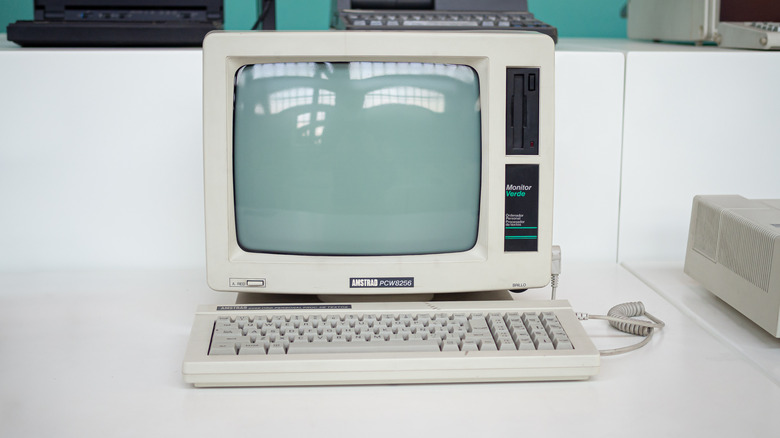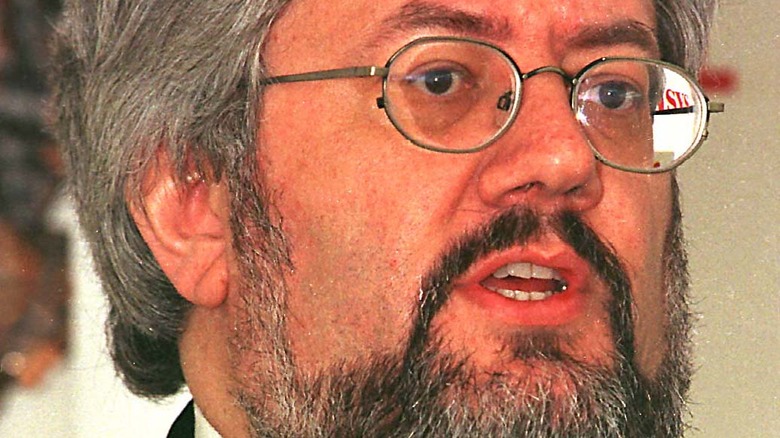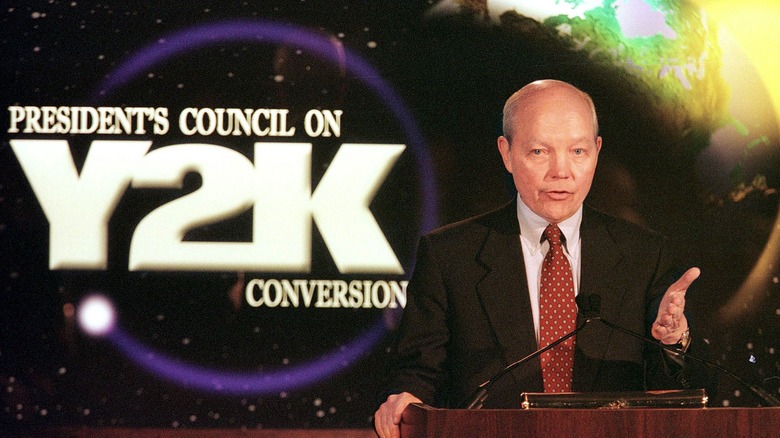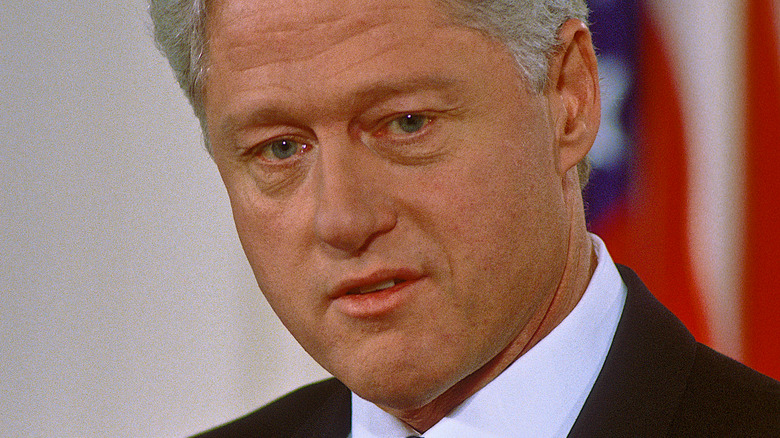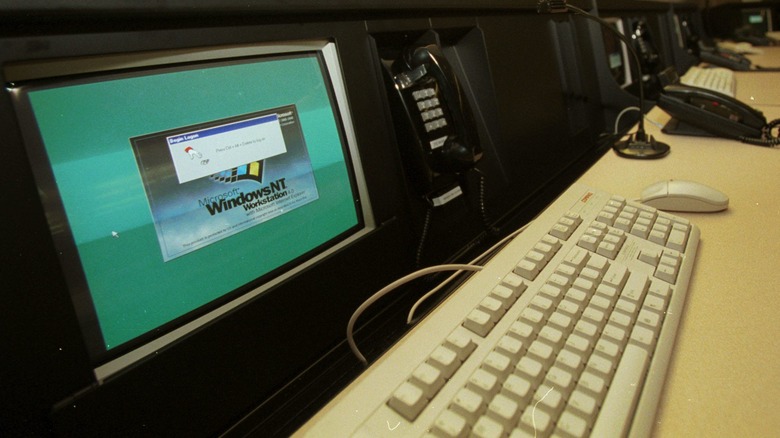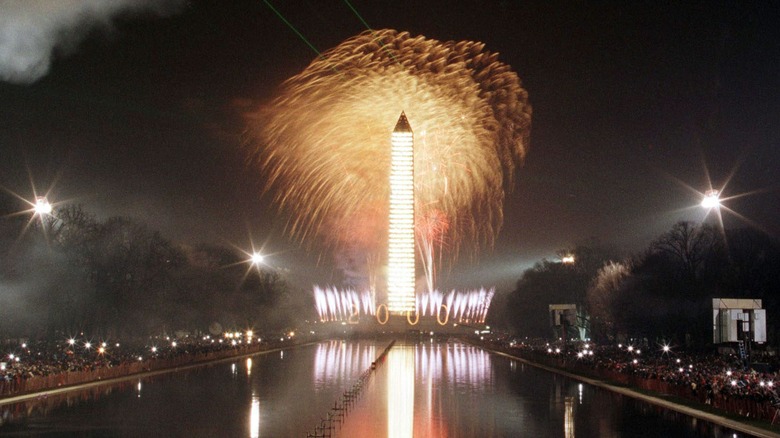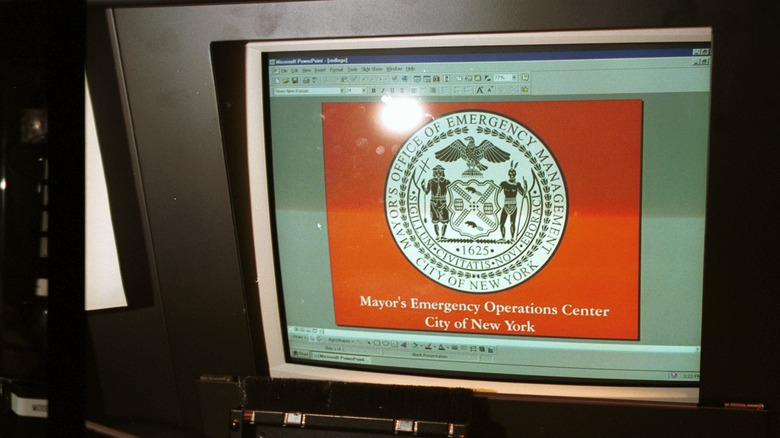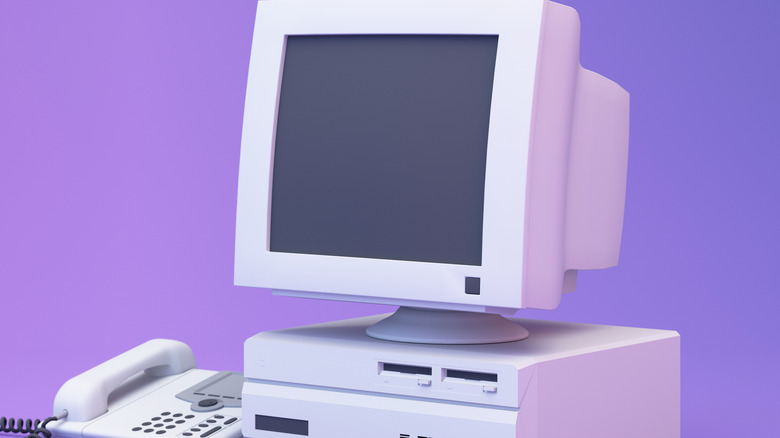Y2K Explained: The Technological Crisis That Never Was
At the turn of the century, with a new millennium dawning, a digital specter loomed over the horizon and haunted the imaginations of people across the globe. It was the Year 2000 Bug, or Y2K for short, a mysterious and enigmatic glitch threatening to plunge humanity into chaos and potentially the dark ages as the clock struck midnight on January 1, 2000.
Obviously, that didn't happen. Just like the world not descending into seismic chaos on an occasion when the planets aligned, or the Large Hadron Collider not generating a black hole, Y2K did not end up destroying the world in any capacity. However, unlike the baseless conspiracies surrounding the Mayan Calendar, the LHC, or a Great Planetary Conjunction, Y2K had some basis in reality.
Looking back to the turn of the millennium, it's easy to forget the genuine fear and uncertainty that surrounded the Y2K bug during its peak. The panic caused by the potentially catastrophic glitch was widespread and held with tenacity. Although modern sensibilities see the whole thing as a joke on par with other apocalypses that didn't actually happen, the terrors of the bug weren't averted due to a lack of existence, but rather due to the hard work of various governments and skilled tech workers.
The broader misconceptions about Y2K's validity are likely due to misunderstandings of what the glitch even was, to begin with. The Y2K bug has become a historical curiosity, a punchline that people use to reminisce about the turn of the millennium and the paranoia that surrounded it. Although, it is essential to recognize that beneath the humor lies a lesson in the power of collaboration, preparation, and the importance of addressing potential technological vulnerabilities.
What was the Year 2000 Bug?
The center of the Y2K bug arose from a seemingly innocent yet consequential coding practice. In the early days of computing, memory was scarce and expensive. To save precious memory, programmers used a two-digit representation for years, assuming the first two digits to be "19." This shorthand worked well in the 20th century when "87" signified 1987. The problem was, as 2000 loomed, computers were expected to interpret "00" as 1900, potentially leading to date-related errors and system failures.
However, the bug wasn't just an issue of computer clocks misreading the date. It went far beyond that, as many software programs and embedded systems heavily relied on accurate dates for critical operations. This meant incorrect dates could ripple across various sectors, causing financial miscalculations, transportation disruptions, and public safety risks.
Some of the earliest mentions of the Y2K bug appear on message boards from early 1985, where users mulled over the possibility of computers mixing 2000 and 1900. They also kicked around the idea of a bug caused by discrepancies between the Julian calendar and the Gregorian calendar's handling of Leap Days. The "Leap Day bug" was similarly averted, and also less worried about by the general public.
Earlier still was a 1984 book by Jerome and Marilyn Murray entitled "Computers in Crisis." The couple's book came about after Marilyn encountered a Y2K-related glitch while entering an early-2000s date on a computer, which subsequently interpreted the date as early-1900s.
The Y2K bug didn't really reach the public eye until much closer to the ever-looming deadline. In the mid-'90s, various government agencies began making changes internally to address the oncoming glitch. But, the glitch didn't just stand to affect critical government infrastructure, it also stood to affect systems much nearer and dearer to the general public.
Sounding the Alarm
Once confined to web forums and chatter amongst industry experts, Y2K eventually made its way into the public's eye in the late-'90s. Albeit, it wasn't as though the public had collectively figured out the glitch's existence. What did happen was the ongoing information campaign waged by select figures in the media and the government.
One figure at the forefront of spreading the word about the bug was Peter de Jager, who became something of a "Y2K guru" in the late-'90s. The man himself alleges that he had realized the issue as early as 1978, but was promptly brushed off by his boss at IBM. He went on to author one of the first warnings about Y2K in a 1993 Computerworld article.
In 1998, The New York Times labeled de Jager as "the Paul Revere for the year-2000 computer crisis." Much like Revere, de Jager wasn't alone in spreading the word, there were more figures spreading the warning about the potential catastrophe. Moreover, some were spreading the word of downright cataclysmic consequences.
Public Panic
As the turn of the millennium drew near, the media played a pivotal role in bringing the Y2K bug to the forefront of public consciousness. Sensationalist headlines and alarming reports warned of potential catastrophes, painting a picture of impending doom as the clock ticked closer to January 1, 2000. De Jager has been criticized in hindsight for his dire warnings that caught public attention. However, de Jager himself spoke from a point of understanding, having worked in the industry himself. The media at-large didn't always possess the same expertise or even ready access to it. The lack of comprehensive understanding of the technical intricacies of the bug left room for misinformation and wild exaggerations to take root in the public's imagination.
Some recurrent ideas would see all computers melting down beyond repair or advancement, followed by a society-wide return to a pre-computer world. One of the issues that made the panic so far-reaching was the fact that the Y2K bug was not confined to a single industry or country, it had global implications. The interconnectedness of the modern world, driven by technology and globalization, meant that the bug's potential impact transcended borders and affected nearly every aspect of daily life. This realization fueled a sense of vulnerability and helplessness, leading to the belief that even the most far-fetched scenarios were plausible.
The fear of a complete meltdown of computers and a reversion to the Stone Age represented an extreme manifestation of this vulnerability. People envisioned a world without the modern, functioning infrastructure that had come to be relied on. A world where basic necessities like food, water, and communication would be scarce or even inaccessible. The sheer scale of these imagined consequences evoked a sense of dread, prompting individuals to take drastic measures in preparation.
Technological Apocalypse to Actual Apocalypse
As the more hyperbolic fears grew, some people began hoarding supplies. A CNN article in December of 1999 suggested items that readers should keep a supply of goods for the turn of the year. Among those items were food supplies such as comfort foods and baby formula, as well as miscellaneous items such as cash, whistles, traveler's checks, and local maps.
The idea of Y2K as "The End of the World as We Know It" had become commonplace by the start of 1999, but amongst fears about the death of the modern world were fears about the death of the world, no prefix needed. It wasn't uncommon to see tabloid newspapers plastered with promises of an armageddon that would include machines turning against man, and nuclear weapons launching and detonating on their own.
With all of this lining up with the year 2000, it got some sparks flying amongst some Christian communities about the coming of the end times. Televangelist Jerry Falwell once proclaimed that "Y2K is God's instrument to shake this nation, to humble this nation," and likened it to the story of the Tower of Babel. For $38, Falwell sold copies of a video entitled "A Christian's Guide to the Millennium Bug." This video joined the ranks of media such as the book "Y2K: The Millennium Bug-A Balanced Christian Response."
Y2K survival guides weren't just religiously oriented either. Oceans of books were published with varying levels of severity about the coming crisis. The books were mostly uninformative and sensationalist, with the occasional, good-faith guide for checking preparedness on your own computer. Many of the more sensational books offered similar pieces of advice to prepare for Y2K, but the vast majority of them prescribed similar outcomes for when the year 2000 came — doom.
The Work Behind the Scenes
Needless to say in hindsight, nothing major came of the Year 2000 Bug. The world didn't end, machines did not turn on man, and a nuclear armageddon did not occur. But that wasn't because there wasn't an issue, to begin with — it was because of the tireless work that took place behind the scenes to ensure a crisis didn't occur.
While public panic ensued, the work behind the scenes had long since begun to ensure the worst horrors of the Millenium Bug could be avoided. Even though the perceived possible outcomes of Y2K were earth-shattering, the actual work to avoid it was much less glamorous.
In 1998, the Congressional Committee on Government Reform and Oversight concluded that Y2K would require "the most massive and coordinated repair efforts in human history." At the time, they estimated that as much work had already been done to avert the issue, much more work was still needed. They called on President Bill Clinton and Executives around the world to rise to the occasion.
That same July, President Clinton went on to address the issue with legislation encouraging cooperation between companies working to rectify the issue internally. Meanwhile, he also set a deadline for the government to be in compliance with updated standards by March 1999. Nations around the globe followed suit, and in December 1998, the United Nations called for coordinated efforts around the world to address Y2K.
Behind the coordination between governments and companies was the booming field of IT professionals. Those professionals spent the time leading up to the turn of the century tediously rewriting millions of lines of code to ensure that no issues were encountered on January 1, 2000. The praise for all of that hard work is left unsung.
The Silence in the Limelight
Despite the immense preparations made by companies and governments worldwide, no one was quick to celebrate a victory before 2000 rolled around. The reasoning behind the public silence from the most prepared stemmed from being publicly embarrassed by any failure. Of course, the lack of reassuring rhetoric can almost definitely be tied to the rising panic seen within the general public.
The fear of being loudly incorrect about Y2K extended beyond individual companies to entire industries. For instance, financial institutions and banks were cautious about making bold assurances, fearing a run on their assets if public anxiety escalated. Governments were more present for public reassurance, but it wasn't quite enough to put a stop to the veritable media storm of Y2K.
This collective reticence became more pronounced as the new millennium approached. Some companies opted for a wait-and-see approach, preferring to address any problems quietly and discreetly if they arose. This was a calculated strategy, as it allowed them to mitigate any issues behind the scenes while avoiding public scrutiny and panic. Moreover, it allowed companies to avoid any public embarrassment that would arise from potentially any issue arising due to the bug.
While this silence was understandable from a risk management perspective, it contributed to the perception that some companies were inadequately prepared for Y2K. It left the public with lingering doubts and a sense of uncertainty about the actual level of preparedness across various industries. From March 1999 until the year's end, a survey of Americans showed that more than 50% of them had heard "a great deal" about Y2K, but less than 20% were willing to say it was "no problem."
The Year 1999
In the final year leading up to the turn of the millennium, a concerted global effort was underway to ensure that the Y2K bug would not wreak havoc on the world's technological infrastructure. With the Y2K bug's potential consequences looming large, governments, businesses, and tech experts collaborated tirelessly to address the issue head-on and minimize any potential disruptions.
Although work had begun well in advance, the intensity escalated as 2000 drew closer and closer. Government task forces and regulatory bodies had been established, and software updates were pushed out by tech companies to make computers "Y2K Compliant." The effort to ensure a seamless transition into the new year was in overdrive as 1999 drew to a close.
One of the significant challenges in the last year of Y2K preparations was the sheer scale of systems that needed to be checked and remediated. The Internet, which had grown exponentially during the late 1990s, presented an intricate web of interconnected devices and platforms. Efforts were made to assess and update critical infrastructure to prevent potential disruptions in cyberspace.
On the consumer end, entire businesses had boomed around Y2K preparedness. In addition to survival guides, IT help and services specifically directed at Y2K boomed. The industry for Y2K businesses had grown so much that they received their own stock index, which was subsequently named the "de Jager Year 2000 Index."
Finally, at the end of the year, the moment finally came. The public's preparation and stocking was going to show its necessity, the ever-feared bug was set to run roughshod on the world's computer systems. At 11:59 pm on December 31, the world held its breath.
The Year 2000
Finally, 2000 arrived and the world did not end. Midnight on January 1 came and went, with barely a feather ruffled. Though the popular notion can be that literally nothing happened, there were some examples of the Y2K Bug in action. In a more humorous example, the bug caused a in New York to be hit with a $91,000 late fee from a video rental store.
On the more serious side, the bug did put U.S. spy satellites out of commission for multiple days at the start of the year. A nuclear plant in Japan was plagued by minor hiccups that included an alarm sounding at midnight on New Year's Day, but nothing more serious occurred. On the more embarrassing end, the Naval Observatory briefly held the date as "January 1, 19100" at the start of the year.
Overall, there was no huge disaster. People didn't lose their money in the blink of an eye, although one man in Germany did briefly gain six million dollars, and computers still worked exactly as intended for the most part. The doom and gloom that had been prophesied by countless survival guides didn't come to pass, and it was due in no small part to the hard work of countless IT professionals across the world. The more dramatic predictions weren't ever going to happen, but the worst of what was possible was successfully averted.
Panic to Mockery to Hoax
As relief washed over the globe, a new feeling began to take hold. Hindsight allowed people to view the once-feared Y2K bug as an exaggerated, comical episode in history. The sheer scale of Y2K preparations, combined with the anticlimactic resolution of the bug, contributed to a new, lighthearted perspective that emerged. While the public had braced itself for potential chaos and catastrophe, the transition into the new millennium was remarkably uneventful. The fears of computer systems collapsing and society reverting to the Stone Age seemed far-fetched and laughable in retrospect.
As the Y2K bug's impact was minimal, the humor surrounding it began to overshadow the initial sense of urgency. People joked about their stockpiles of canned goods and survivalist gear, which were now unnecessary relics of the Y2K era. The idea that the whole thing was a hoax began to take shape. The billions of dollars spent to avert the issue were thought to have been spent in vain. The term "Y2K" itself became synonymous with an exaggerated, nonexistent threat, perpetuating the idea that it was all much ado about nothing.
The humorous perspective had an unintended consequence — the fading memory of the Y2K issue's genuine significance. The Y2K bug was not a hoax; it was a real technical challenge that required substantial effort and collaboration to address effectively.
The fact that there were no widespread disruptions during the transition was a testament to the hard work and preparedness of the tech community, but the early warners of the threat posed by the issue were soon seen as scam artists and charlatans. While there certainly were some bad actors taking advantage of the public panic, there were those who were genuinely trying to raise awareness.
A Cultural Relic
Two decades removed from the turn of the century, the idea of Y2K has become nothing more than an odd relic of an earlier time. While it has become easy to lump Y2K in with the likes of the 2012 Mayan Calendar conspiracy, it's important to remember that negative effects were only averted due to the hard work and collaboration that took place globally.
The basics of the Y2K Bug can still be seen in the future, with the Year 2038 Problem being 15 years away for Unix systems. The issue relates to 32-bit processing, and in short would have been similar in some way to Y2K, where computers would flip from 2038 back to 1970. However, much like with Y2K before it, tech workers are already hard at work to prevent the Year 2038 Problem from ever becoming an issue.
Similarly, issues with older computers could come up in 2050. Some computers are still programmed to recognize any two-digit date going beyond "50" as starting with a "19." However, this is less prevalent than the Year 2038 Problem, as most of the systems that would have the issue have already been retired.
What's most important to recognize is that Y2K was a serious issue, and was only diminished by the hard work and dedication of many across the globe. The genuine issue was averted and later seen as nothing more than an overblown joke at best, and a deceitful hoax at worst. The story of Y2K is one of the greatness achieved through the collaborative work of humanity, but a cautionary showing of how easily that work can be forgotten.

